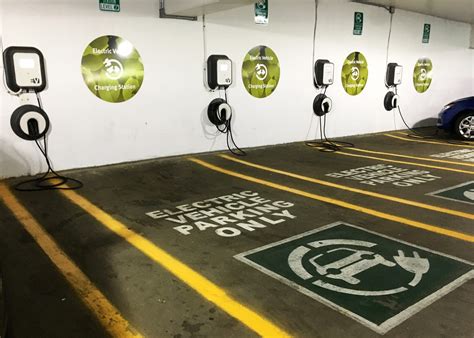Charge Up Your Savings: A Guide to EV Charger Installation Rebates
As electric vehicles (EVs) gain traction in the automotive market, the need for accessible charging stations becomes increasingly vital. One of the most significant barriers to EV adoption has been the cost of installation for home charging stations. Thankfully, various incentives and rebates are available to ease this financial burden. This guide delves into the available EV charger installation rebates, how to apply, and tips for maximizing savings on your EV charging station.
Understanding the Importance of EV Chargers
With growing concerns about environmental sustainability and fossil fuel dependency, EVs have emerged as a cleaner alternative to traditional gasoline-powered vehicles. As more people switch to electric cars, the demand for home charging solutions has surged. Having a reliable and efficient charging station at home can significantly enhance the EV ownership experience.
Types of Incentives Available
Rebates and incentives for EV charger installation can come from various sources, including:
- Federal Incentives: The federal government has initiated several programs to promote electric vehicle adoption. Tax credits and rebates are available for consumers who install EV chargers at home.
- State and Local Programs: Many states and municipalities offer specific incentives tailored to their residents. These can vary significantly, so it’s worth checking local government websites for specifics.
- Utility Company Rebates: Some utility companies have recognized the growing EV market and offer rebates for customers who install charging stations to help offset costs and encourage EV adoption.
How to Apply for a Rebate
Applying for a rebate for your EV charger installation typically involves several steps:
- Research Availability: Check which incentives are applicable in your area. Websites like the U.S. Department of Energy provide comprehensive resources.
- Select a Contractor: Choose a certified electrician or contractor familiar with EV charger installations and eligible for rebates. Having a professional handle the installation can help ensure it meets all safety guidelines and standards.
- Complete Necessary Forms: After installation, fill out the required forms for the rebate program you’re applying to. Be prepared to submit supporting documents, such as the receipt for installation and proof of certification.
- Submit Your Application: Follow the submission guidelines provided by the rebate program. Ensure all information is complete and accurate to avoid delays.
- Follow Up: After submitting, keep track of your application status. It may take time for your rebate to be processed, but staying in contact can help resolve any issues promptly.
Maximizing Your Savings
To make the most out of your investment in an EV charger, consider these saving tips:
- Combine Incentives: If possible, stack federal, state, and utility incentives to maximize your total savings.
- Choose the Right Charger: Selecting an EV charger that fits your daily mileage and charging needs can prevent unnecessary spending on high-capacity chargers.
- Time Your Installation: Some rebates might be available only for a limited time or during specific promotional periods. Stay informed about changes in programs.
- Energy Efficiency Programs: Look into energy efficiency programs your utility provider may offer. Sometimes they provide additional incentives for homes that utilize energy-efficient appliances, which could align with your EV charger.
Conclusion
Installing an EV charger at home is an investment that can significantly enhance your electric vehicle experience. However, financial incentives can help alleviate the cost, making this transition smoother. By researching federal, state, and utility rebates, and following the proper application procedures, you can take advantage of substantial savings. Not only do you contribute to a more sustainable future, but you also enjoy the convenience and cost-effectiveness of home charging.
FAQs
1. What is the typical cost of installing a home EV charger?
The installation cost can vary widely based on factors such as the type of charger, required electrical upgrades, and local labor costs. However, prices often range from $500 to $2,000, not including any rebates.
2. Are there federal tax credits for EV charger installations?
Yes, as of the latest updates, the federal government offers tax credits for individuals who install EV chargers at home. However, make sure to verify the current tax laws, as these incentives can change.
3. Can I install an EV charger by myself?
While it may be technically feasible, it is generally recommended to hire a certified electrician. An improper installation can lead to safety hazards and may void warranty and rebate eligibility.
4. How long does it take to process a rebate application?
The processing time for rebate applications can vary widely depending on the specific program. It may take anywhere from a few weeks to several months. Keeping in touch with the rebate issuer can help clarify timelines.
5. Are there any ongoing maintenance costs associated with EV chargers?
Aside from the initial installation cost, ongoing maintenance costs for EV chargers are typically low. It’s important to keep the charger clean and ensure there are no obstructions to maintain efficiency.
This HTML code provides a comprehensive overview of EV charger installation rebates, addressing key topics and including a conclusion and FAQ section to support reader inquiries.
Download Ev Charger Installation Rebates
